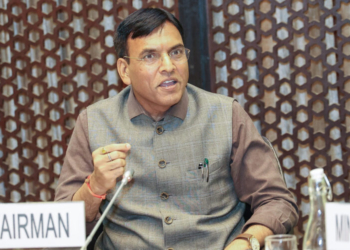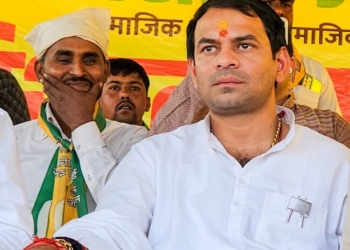Chennai: The residential rooftop solar power sector could become another sunrise sector in India with a business potential of about Rs.1.5 lakh crore to Rs 2 lakh crore, if all things perform precisely like the Sun, said industry officials and experts.
Finance Minister Nirmala Sitharaman presenting the government’s Interim Budget on Feb 1, 2023 said that in an attempt to turn households into power generating units, the central government will focus on popularising rooftop solarisation and free electricity.
“One crore households will be able to obtain up to 300 units of free electricity per month,” Sitharaman said.
Sitharaman said households will save up to Rs.15,000 – Rs.18,000 annually from free solar power and selling to power distribution companies.
The Finance Minister has baited the residential segment by showing the potential savings for the households.
“This will generate a business in the range of Rs.1.5 lakh crore to Rs.2.5 lakh crore. The government is doing all things to remove the bottlenecks- availability of finance, getting permissions from the power utilities and others,” Pasupathy Gopalan, Founder and CEO, Fenice Energy (brand owned by Silres Energy Solutions Private Ltd) told IANS.
“Impetus on rooftop solar and offshore wind indicates Government’s intent to drive capacity installations in previously underpenetrated sub segments of renewable energy,” credit rating agency CARE Ratings said.
According to CRISIL Market Intelligence & Analytics, the targeted one crore rooftop solar installation under the Pradhanmantri Surydaya Yojana is expected to add 20-22 GW of a solar power capacity addition at an investment of Rs 91,000-110,000 crore and lift the overall installed base to 31-33 GW from 11 GW as of December 2023.
If fully implemented, 80-85 per cent of the overall government target of 40 GW in rooftop solar installation could be achieved largely powered by residential rooftop solar, CRISIL Market Intelligence said.
The installed base of residential rooftop solar power will go up by eight per cent by the end of the scheme from the current 2.65 GW, CRISIL Market Intelligence report added.
With the finer details not yet out, based on the current details of financial assistance, the incremental investments will need government subsidies worth at least Rs 35,000 crore over the scheme period, CRISIL Market Intelligence said.
Sitharaman had followed up Prime Minister Narendra Modi’s earlier announcement that the government will launch Pradhanmantri Surydaya Yojana with the target of installing rooftop solar on one crore houses.
This will not only reduce the electricity bill of the poor and middle class, but will also make India self-reliant in the field of energy, Modi had said on January 22 on the historic day of Pran Prathishta of Ram Mandir in Ayodhya.
For the second time the BJP led Indian government is trying to popularise rooftop solar power for the residential segment.
In 2015 the government had announced a target of 100 GW of solar power out of which 60 per cent will be ground mounted and 40 per cent rooftop. The target date fixed was 2022. However with 6-7 GW of rooftop only about 15 per cent of the target has been achieved, Fenice Energy’s Gopalan said.
According to him, globally 40 per cent of the solar power consists of rooftop.
After several rounds of discussions between the government and the industry, many of the issues faced by the residential sector while going for the rooftop solar power plants have been ironed out.
The public sector banks have been asked to lend money for installation of rooftop solar power systems and the power distribution utilities have to buy the power generated.
The Andhra Pradesh and West Bengal power utilities are objecting to the rooftop solar power schemes as it might affect their revenues. But they too would have to change, an industry official said.
“Further the government has increased the subsidy for rooftop solar projects by 20-25 per cent. The cost of solar panels are also coming down. There will be a reduction of 90 per cent in a household’s energy bill from rooftop solar. The payback period for the investment is about two-and-half years,” Gopalan said.
The central government has increased the subsidy for 3kW to 10 kW projects while the projects below that remain the same.
The power utilities have been asked to cut down their approval time from 7-15 days to 24 hours in two years time and they have been obligated to purchase power generated from the rooftop solar systems – 1.5 per cent in 2024-25 which increases to 4.5 per cent in 2029-30.
So, is it all bright like the Sun?
No, there are dark clouds or the challenges – lack of awareness about rooftop solar, unfriendly policy of the power utilities, risk of fly-by-night operators, poor quality materials, lack of maintenance and others.
While the awareness can be created by the government and the industry players, the serious risks are unfriendly power procurement policies of the power utilities or net metering, entry of small players who play the pricing game with poor quality components as the entry barriers are low.
“There are about 75 component items in a solar power plant. The residential segment is a guerilla warfare and big players who are focused on commercial projects may not venture into this segment,” Gopalan said.
While there are several players, there are only a handful of companies offering end-to-end solutions for the residential segment.
Gopalan said that the overall component industry capacity has to go up.
“The DCR – domestic content requirement- capacity in India is only about 3 GW. It has to go up or the government has to change its norms,” Gopalan said.
(IANS)















